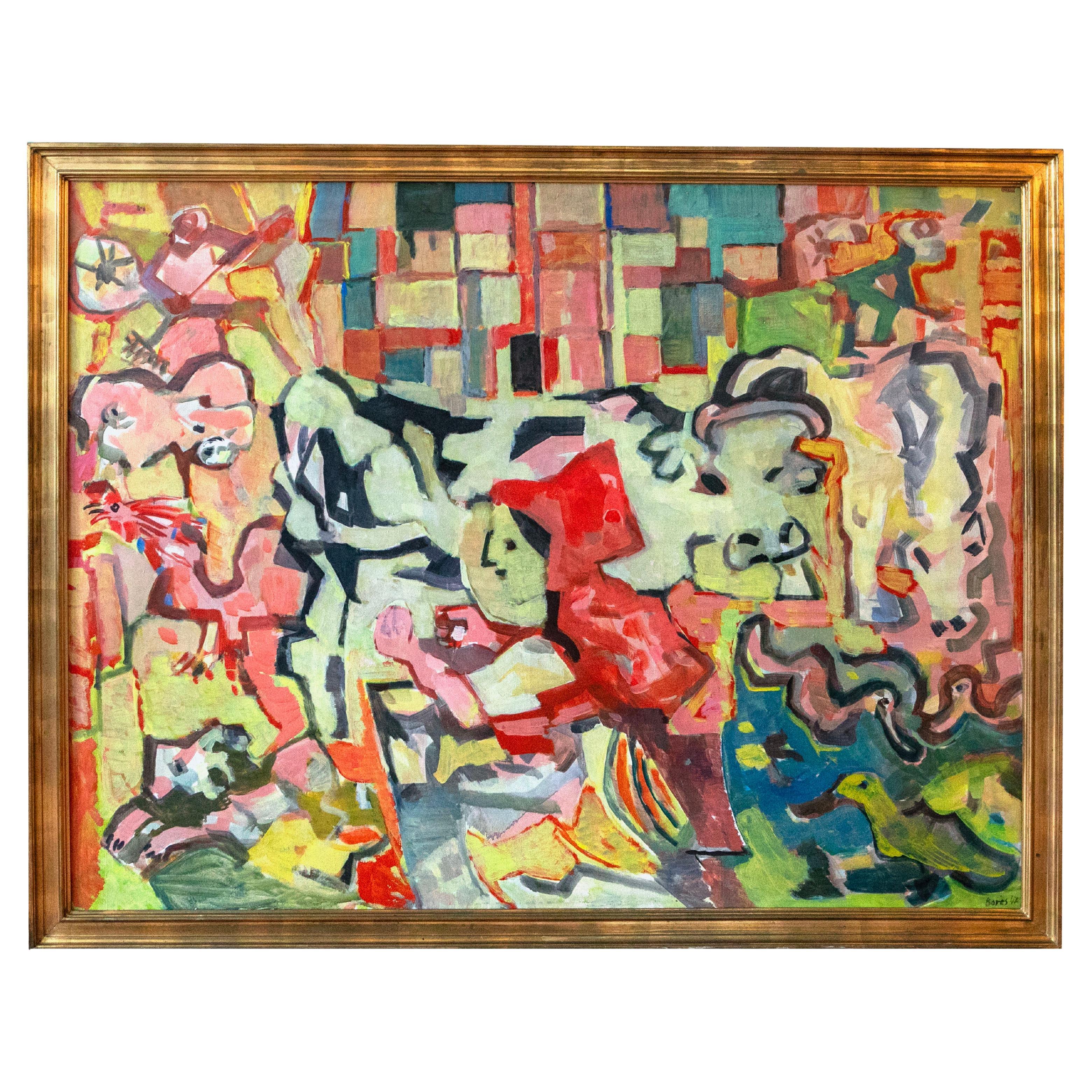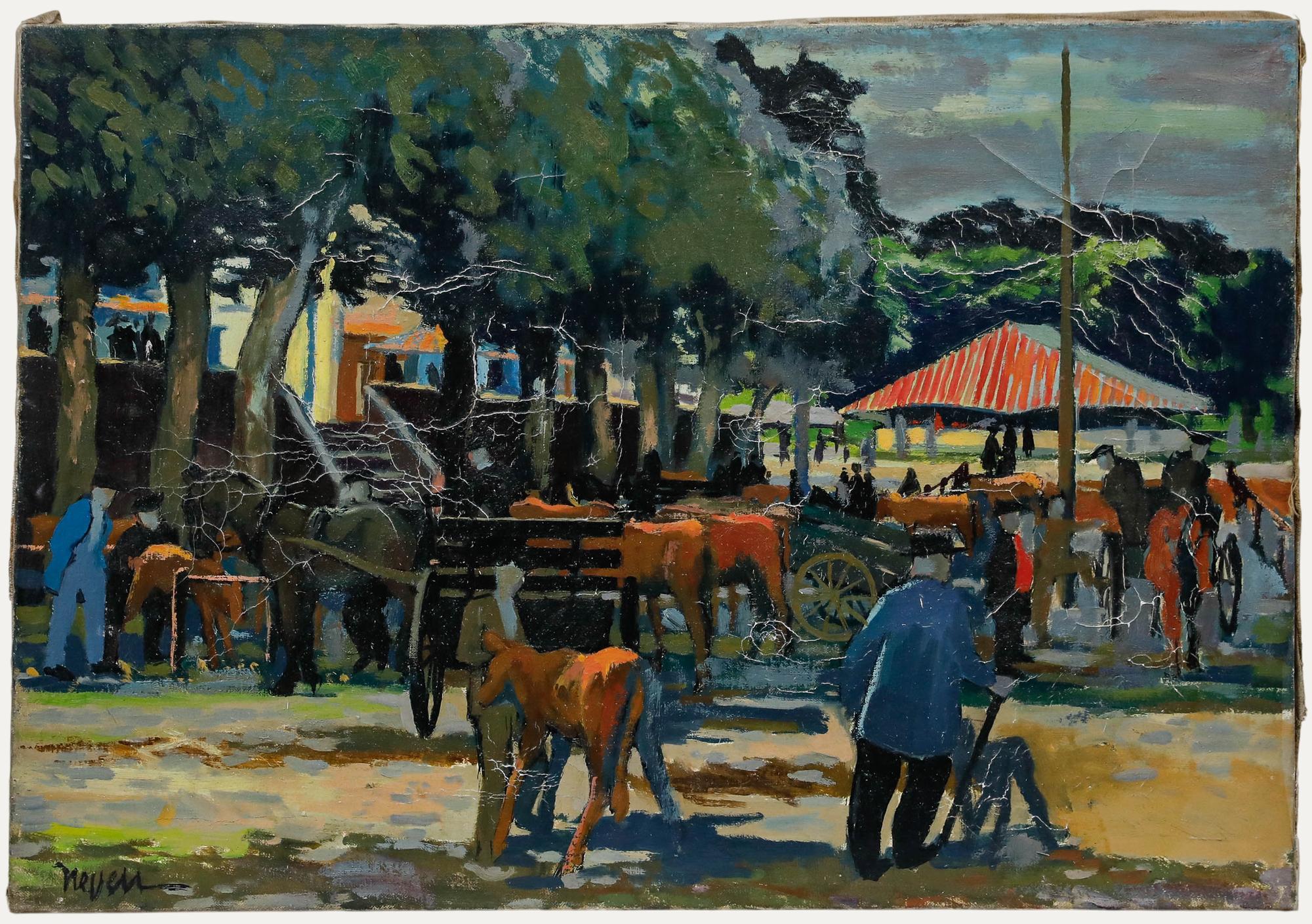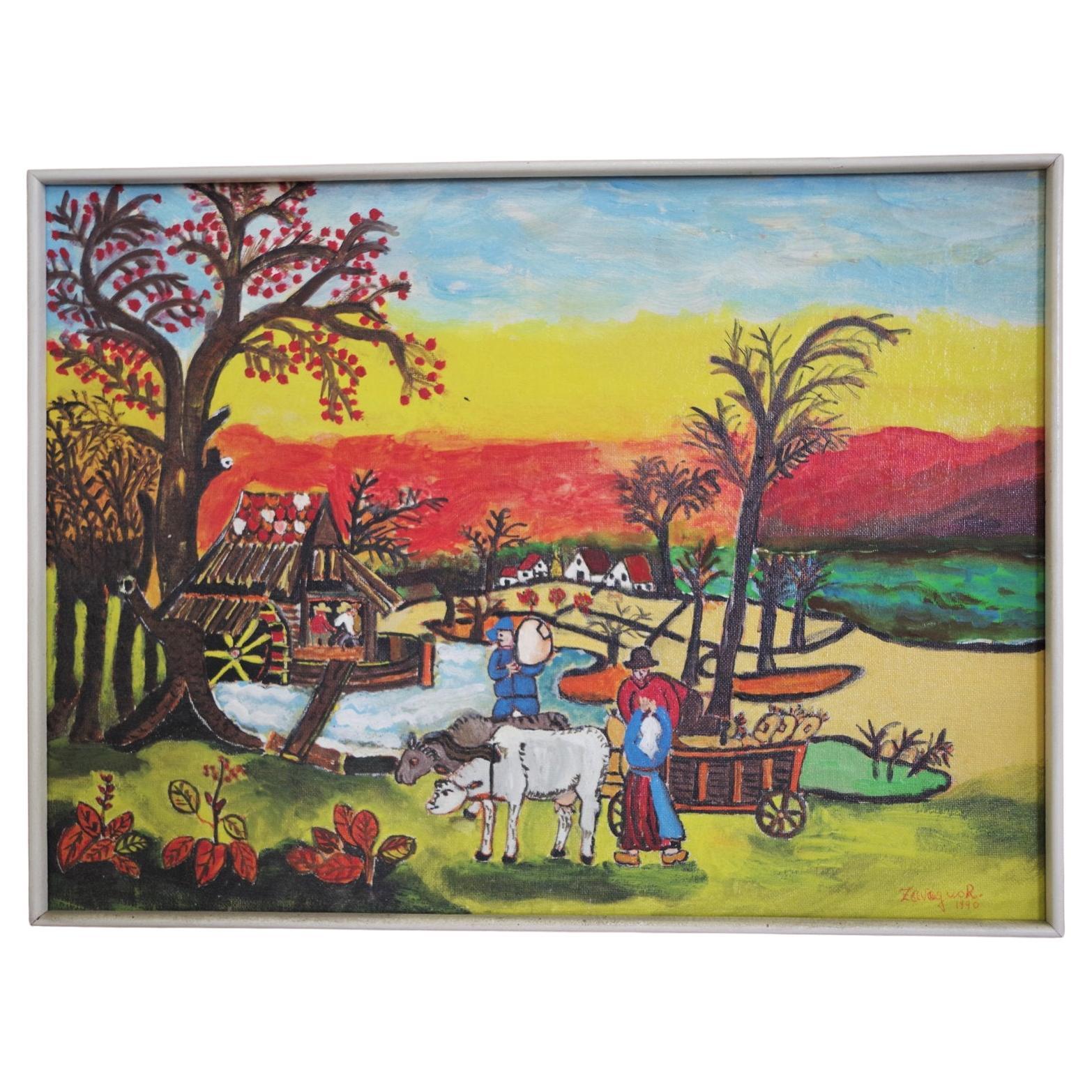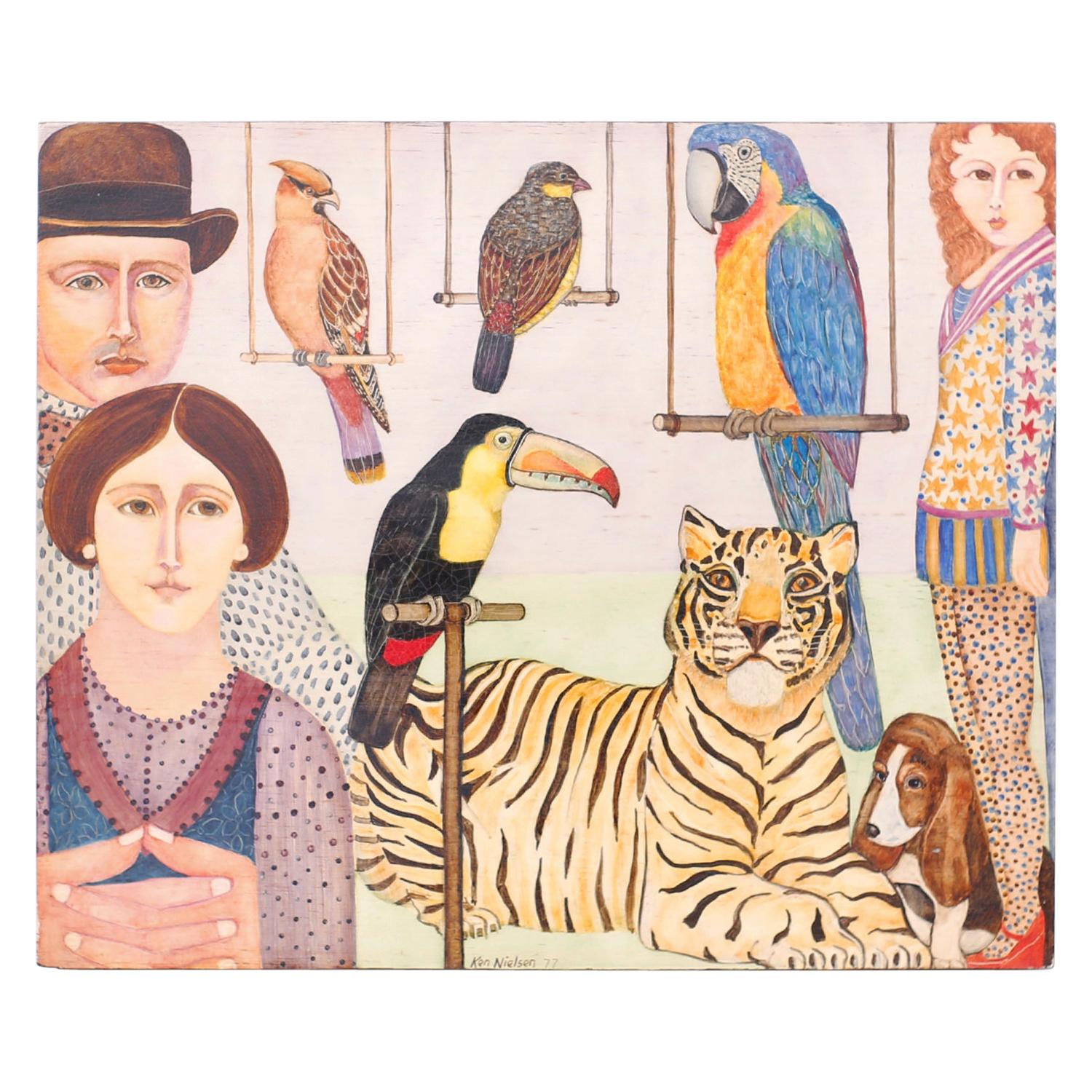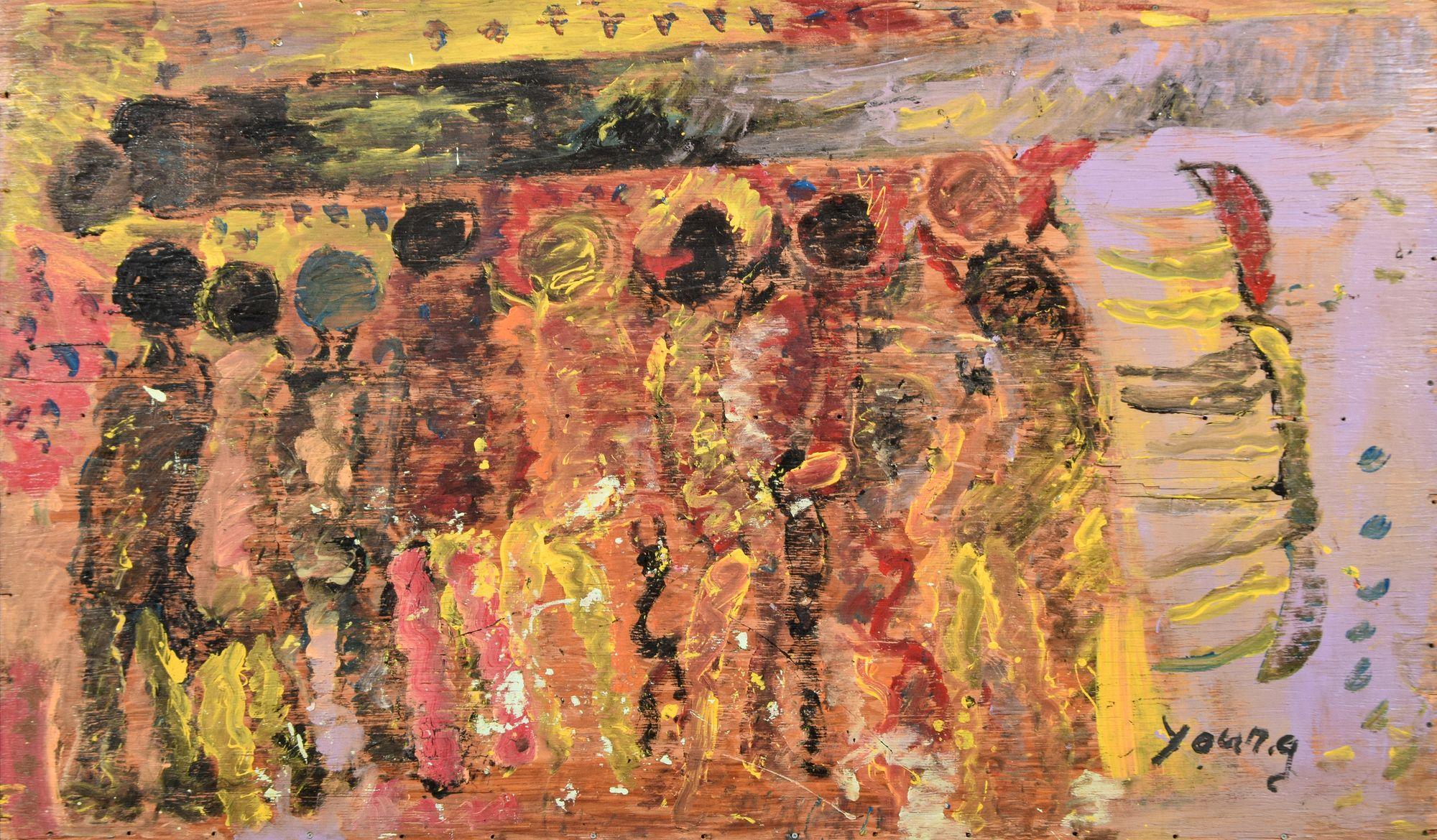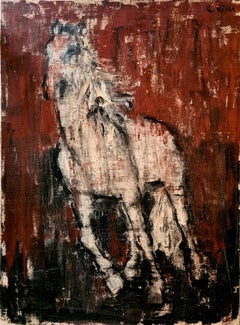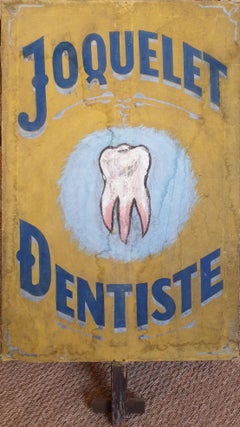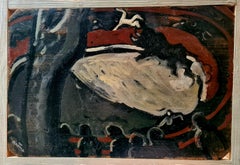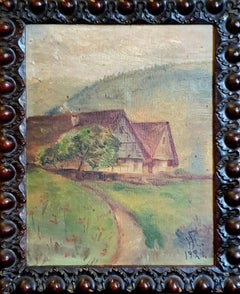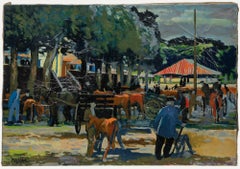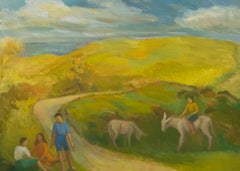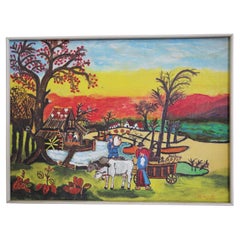Items Similar to Large Scale Early 20th Century Oil on Canvas, The Agriculture and Livestock Fair
Video Loading
Want more images or videos?
Request additional images or videos from the seller
1 of 18
TanimLarge Scale Early 20th Century Oil on Canvas, The Agriculture and Livestock Fair
$1,996.89
$2,852.7030% Off
£1,487.06
£2,124.3730% Off
€1,680
€2,40030% Off
CA$2,756.98
CA$3,938.5430% Off
A$3,056.52
A$4,366.4630% Off
CHF 1,606.32
CHF 2,294.7430% Off
MX$37,406.80
MX$53,438.2930% Off
NOK 20,061.31
NOK 28,659.0230% Off
SEK 18,829.55
SEK 26,899.3630% Off
DKK 12,790.96
DKK 18,272.8030% Off
About the Item
A large early 20th Century naive, folk art, oil on canvas view of a livestock fair by Tanim. The painting is signed bottom left.
A wonderful, humorous and playful view of animals and people enjoying all the fun of an agricultural livestock fair. The animals, horses, cows, sheep, pigs and chickens are all lined up on the cobbled raod by the line of plane trees each side of the market. The spectators are all milling in the centre ground in their smart costumes. Various pieces of agricultural machinery are visible in the centre ground. Tanim has really painted 'all the fun of the fair'. His colour palette and technique for the trees and sky are reminiscent of the paintings of Vincent Van Gogh. A really decorative and intriguing painting that would enhance any collection or decorative scheme.
- Creator:Tanim
- Dimensions:Height: 39.38 in (100 cm)Width: 28.75 in (73 cm)Depth: 0.79 in (2 cm)
- Medium:
- Movement & Style:
- Period:
- Condition:Some light scratching to the surface and small areas of paint loss.
- Gallery Location:Cotignac, FR
- Reference Number:Seller: LG/Tanim1stDibs: LU1430216184882
About the Seller
5.0
Platinum Seller
Premium sellers with a 4.7+ rating and 24-hour response times
Established in 2000
1stDibs seller since 2020
261 sales on 1stDibs
Typical response time: 2 hours
- ShippingRetrieving quote...Shipping from: Cotignac, France
- Return Policy
Authenticity Guarantee
In the unlikely event there’s an issue with an item’s authenticity, contact us within 1 year for a full refund. DetailsMoney-Back Guarantee
If your item is not as described, is damaged in transit, or does not arrive, contact us within 7 days for a full refund. Details24-Hour Cancellation
You have a 24-hour grace period in which to reconsider your purchase, with no questions asked.Vetted Professional Sellers
Our world-class sellers must adhere to strict standards for service and quality, maintaining the integrity of our listings.Price-Match Guarantee
If you find that a seller listed the same item for a lower price elsewhere, we’ll match it.Trusted Global Delivery
Our best-in-class carrier network provides specialized shipping options worldwide, including custom delivery.More From This Seller
View AllFrench Mid Century Oil on Canvas Equestrian Portrait
Located in Cotignac, FR
French Mid Century portrait of a galloping horse by Roger Villet. The painting is signed top right and there is another signature and date to the back of the canvas.
A wonderfully e...
Category
Mid-20th Century Animal Paintings
Materials
Oil, Canvas
$1,426 Sale Price
20% Off
Early 20th Century Folk Art, Double-Sided Fairground Advertising, Oil on Canvas.
Located in Cotignac, FR
Early 20th century French folk art oil on canvas, advertising M. Joquelet the dentist and Mme Irma the snake charmer. A wonderful piece of social history.
At the turn of the century...
Category
Early 1900s Art Nouveau Figurative Paintings
Materials
Oil, Wood, Canvas
$1,659 Sale Price
22% Off
French Expressionist Oil on Panel, La Tauromaquia
Located in Cotignac, FR
French Expressionist oil on wood panel view of a bull in an arena by Jean Arène. The painting is signed bottom left, is painted on an antique wood, chamfered cornered, table top that the artist has reused and is in the original Arène frame crafted by the artist.
Jean Arène was a student of August Chabaud, a highly sought after French artist in Provence who in turn took his inspiration from Cezanne.
A strong and engaging view of a traditional Camargue, South of France scene where a bull is in an arena and is being trained for 'Free Running'. The audience watch on in awe as the 'subalternos' in the ring avoid being caught by the bull, one of them is seen jumping over the protective wooden wall surrounding the ring. Arène has captured the scene from his own experience of visiting such events which have been such an inspiration to artist such as Goya and Picasso. He has used a limited colour palette to great effect, highlighting the audience figures and central area in greys and whites. The handling of the figures around the outside of the scene is very reminiscent of the works of Raoul Dufy.
Bullfighting (from the Greek tauros, "bull" and makheia, "fight") is the way of confronting the bull, either during fights, or during sports or burlesque games such as bull training.
The reality of bullfighting shows vary according to practice and country. Bullfighting practices have acquired a stable form, codified rules and real institutionalization. These include the course landaise, the Camargue race in France, the toros coleados in Venezuela and Colombia, the jaripeo in Mexico, the rodeo chileno in Chile, the race de recortadores in Portugal or El rodeo...
Category
Late 20th Century Animal Paintings
Materials
Wood, Oil
Early 20th Century Folk Art Impressionist Oil on Board, 'View to the Farmhouse'.
Located in Cotignac, FR
Early 20th century Folk Art Impressionist oil on board view of a farmhouse. Initial signed but artist unknown and dated 1924 to the bottom right. Presented in a really beautiful peri...
Category
Early 20th Century Folk Art Landscape Paintings
Materials
Board, Oil
Mid Century Expressionist Landscape, Oil on Canvas. The Countryside
Located in Cotignac, FR
Mid Century oil on canvas landscape painting by Franco Hungarian artist Elemer Vagh Weinmann. The painting is signed bottom right and is presented in a custom gilt frame with a white...
Category
Mid-20th Century Expressionist Landscape Paintings
Materials
Canvas, Oil
Naive Folk Art Village Street Scene
Located in Cotignac, FR
Mid century French oil on board street scene. The painting is not signed but is presented in a patinated wood frame.
A painting which captures a serene village scene, dominated by a...
Category
Mid-20th Century Folk Art Landscape Paintings
Materials
Oil
You May Also Like
Large Painting By Francisco Bores - "La Ferme"
Located in Kastrup, DK
Francisco Bores – "La Ferme" (The Farm)
A remarkable and highly collectible painting by the celebrated Spanish modernist Francisco Bores (1898-1972).
"La Ferme" is a prime example of...
Category
Mid-20th Century Spanish Modern Paintings
Materials
Canvas, Wood
Pierre Neveu (b.1929) - 20th Century Oil, Cattle Market
By Pierre Neveu
Located in Corsham, GB
A colourful depiction of a French cattle market in morning light. Signed to the lower left. Inscribed on the stretchers verso. On canvas.
Category
20th Century Figurative Paintings
Materials
Oil
Double Sided Mid 20th Century Oil - Pliant Donkeys
Located in Corsham, GB
A naive mid-century landscape showing figures roaming a quiet hillside with donkeys. To the reverse of the canvas is a second painting depicting a country village scene. Both unsigne...
Category
20th Century Landscape Paintings
Materials
Oil
$338 Sale Price
20% Off
Vibrant 1970 Painting of Agricultural Landscape by Zavagnor - A Celebration of R
Located in Manzano, IT
Vibrant 1970 Painting of Agricultural Landscape by Zavagnor - A Celebration of Rural Life
This captivating painting by Zavagnor from 1970 offers a vibrant and nostalgic glimpse into...
Category
Vintage 1970s Paintings
Materials
Canvas, Wood
$427 Sale Price
40% Off
Oil Painting on Board of People, Animals and Birds
Located in Palm Beach, FL
Modernist oil painting on board depicting an unexpected gathering of personalities all with a common expression. Signed by the noted artist Ken Nielsen and...
Category
20th Century American Modern Paintings
Materials
Paint
Massive Purvis Young Painting, Estate of the Artist, 84"W
By Purvis Young
Located in Lake Worth Beach, FL
Artist/Designer; Manufacturer: Purvis Young (American, 1943-2010)
Marking(s); notes: signed, BCO1FE60
Materials: painted wood
Dimensions (H, W, D): 48"h, 84"w; 50"h, 86"w frame
Additional Information: Provenance: This work is from the personal collection of Anthony Romano, one of the two guardians appointed to the artist in the later part of his life.
Purvis Young (1943–2010) was a self-taught American artist from Miami’s Overtown neighborhood, known for his raw, expressive paintings on found materials that explore themes of social justice, spirituality, and everyday urban life. His work resonates with the visual urgency of Jean-Michel Basquiat, the narrative power of Thornton Dial, and the outsider spirit of Bill Traylor and Sister Gertrude Morgan...
Category
Late 20th Century Outsider Art Figurative Paintings
Materials
Wood
More Ways To Browse
The Horse Fair
Naive Folk Art
Antique Machinery
Early 20th Century Horse Paintings
Vincent Van Gogh Paint
Antique Planer
Sheep Oil On Canvas
Antique Chicken Art
Folk Art Sheep
Folk Art Cow
Horse Painting Folk Art
Pig Oil Painting
Sheep Cow Painting
20th Century Signed Oil Painting Sheep
Large Antique Oil Painting Sheep
Pig Folk Art
Antique Pig Painting
Folk Art Chicken
